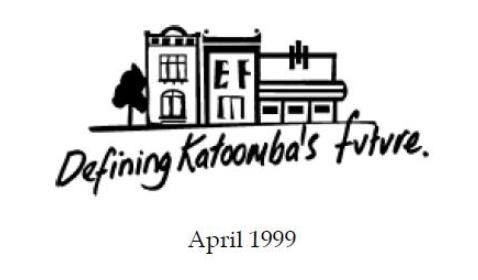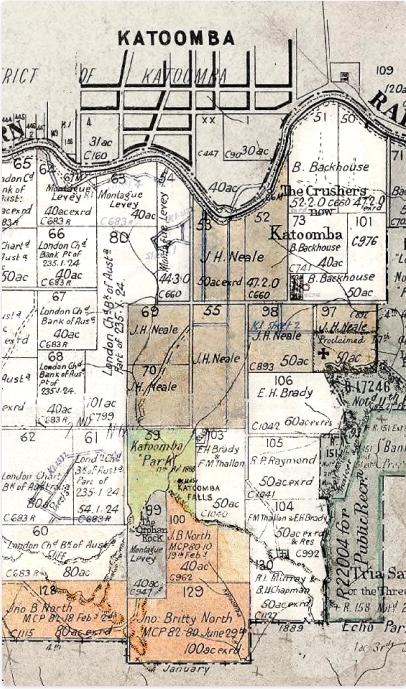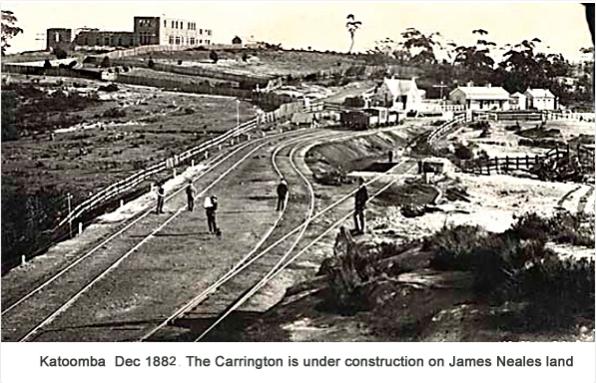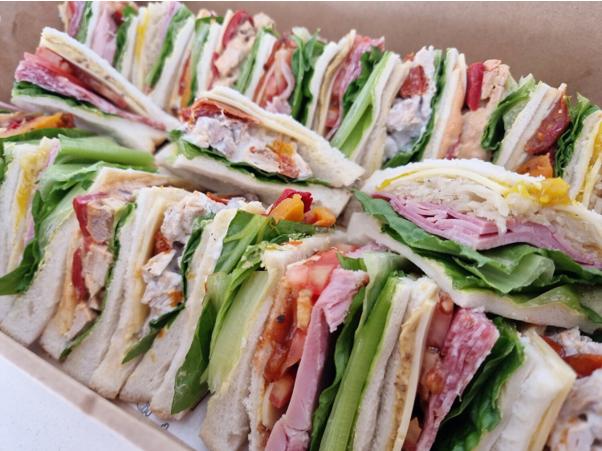Katoomba’s Charette – Chapter 1: A Brief Background to Katoomba’s Town Centre planning pre-1998

Back in 1998, the regional community of Katoomba had formed a view that their township centre deserved progressive town planning. This vibe had emerged after long neglect and interest by local government, Blue Mountains {city} Council.
Katoomba locals (interested business owners and residents alike) considered it time that such town planning for Katoomba’s mainly town centre be thoughtful, appropriate and supported; it be grassroots engaged – demonstrably ‘by the people for the people’.
Blue Mountains {city} Council had long displayed a dearth of interest in future planning for Katoomba’s township and in community engagement.
Traditionally, a local council’s mandate scope was ubiquitously limited to ‘roads, rates and rubbish‘ – that is to collect rates to fund local roads and rubbish collection.
Katoomba had since 1876 been sold off as vacant bushland and then subdivided for colonial settler housing by two noted British property speculators John Britty North and James Neale.
Since the 1880s Katoomba has been recognised by travellers as the established hub of the Blue Mountains as cool climate holiday retreat, many drawn via from Sydney by road and train. So this is why The Carrington Hotel was built for that tourism market and first opened in 1883.
Yet any supportive town planning by Blue Mountains {city} Council to facilitate that temporary visitation influx has consistently been at arms length, reactive predominantly to influential private property owners and property developers, historically like successive councillors themselves.
In times past, Katoomba Town Hall had traditionally been located in the old centre of Katoomba in business central Parke Street, clearly named after Sir Henry Parkes.

Traditional Katoomba (c.1920s) showing in Parke Street the town hall (white building) with the fire station on the right and hospital (with portico) on the left.
A Brief History of Katoomba Council
‘Local government in the Blue Mountains commenced on 4 January 1889, when the Municipality of Katoomba was incorporated. The first Katoomba Council was formed in 1890.
The Kanimbla Shire Council was incorporated on 13 June 1906. At this time the Council covered the major part of the Mountains except for Katoomba.
On 14 December 1919, the separate Municipality of Blackheath was incorporated and taken from the Blue Mountains Shire area. At this stage, there were three Councils operating in the Blue Mountains area and it later became necessary to form a County Council to supervise the distribution of electricity and water supplies in the area.
On 1 July 1944 the Blue Mountains County Council was established. Other duties of this County Council were the supervision and operation of the sewerage schemes.
In May 1946 Katoomba was proclaimed a City. On 1 October 1947 the Municipality of Blackheath, the City Katoomba and the Blue Mountains Shire Council, together with Blue Mountains County Council, were incorporated to become the Blue Mountains City Council.
Further changes took place on 1 January 1980 when the electricity function was transferred to Prospect County Council and on 1 July 1980 when the Metropolitan Water, Sewerage and Drainage Board assumed responsibility for water supply and sewerage services in the City.
Further changes to the structure of local government and Blue Mountains City Council were made on 1 July 1993, when the NSW Local Government Act took effect. This Act changed the responsibilities of the Mayor and Councillors and separated the functions more clearly from those of the General Manager.’
SOURCE: ^https://data.nsw.gov.au/data/organization/about/blue-mountains-city-council
Council chambers had similarly been located in a ‘Civic Centre’ in Katoomba’s nearby high street imaginatively named by Council as Katoomba Street.
In the late 1960s, various councillors decided to relocate council chambers away from the local community and to build an imposing Taj Mahal brutalist style high-rise tower chambers high atop a hill isolated about 300 metres away from the centre of downtown Katoomba on the other side of the busy and dividing Great Western Highway.

Council’s brutalist 1960’s ‘Taj Mahal’ grandiose chambers was funded out of ratepayers’ wealth, but situated outside Katoomba’s town centre, aloof from the townsfolk.
It was the beginning of council’s aloof culture towards local ratepayers – residents and business owners alike – being Council’s income bread and butter revenue. What contemptible bureaucratic arrogance!
In 1969, councillors renamed the municipal shire council ‘Blue Mountains City Council’, clearly with some grand Sydney sprawl scheme as a conurbation of the wild forested Blue Mountains region into an outer west mega Greater Sydney.
A few years after the 1999 Katoomba Charrette report was published, Council creatively renamed ‘Main Street’ to ‘Bathurst Road’. It must have taken a Council committee some meetings fed by lashings of club sandwiches.
Council has been reticent from engaging with the local ratepayers (residents and business owners) , so the township had been long run down. Tourism has never been of Council’s genuine interest.
Many council managers had been, and continue to be, recruited by Council ‘off-Mountains’ from metropolitan Sydney and further afield so arriving with no local knowledge or sense of home, along with Council’s contracted planning consulting firms. Thus, Council’s successive management’s local knowledge base since its merger inception in 1947 over many decades has culturally remained naive and ignorant of the local community’s town planning values, priority needs and interests.



